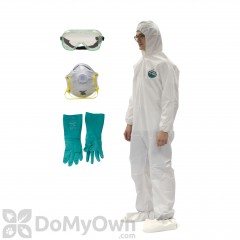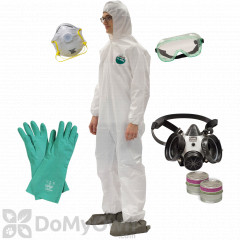At only 9 inches in length, the flying squirrel is the smallest of the tree squirrels. There are two species of flying squirrel in the US-the Northern Flying Squirrel and the Southern Flying Squirrel. The Southern flyer is the smaller species.
- All flying squirrels have a furry membrane extending between the front and rear legs which lets them glide through the air between branches.
- The Northern Flying squirrel is light brown in color with a white belly, flat tail and large eyes.
- The Southern Flying squirrel is grayish brown in color with a white belly and black ring around the eyes.
Behavior & Habitat
The flying squirrel does not actually fly, but sometimes appears to be doing so when it "glides" from tree to tree by means of a thin skin extending between its legs. This squirrel builds its nest primarily in tree cavities and between branches, using materials of twig, leaves, moss, and grass. The Northern Flying Squirrel is nocturnal and can be found in mixed forests near stream and rivers in Alaska, Canada, northern California, Colorado, North Carolina and Tennessee. The Southern Flying Squirrel is found in the deciduous forests from southeastern Canada into the eastern United States and in Mexico.
Feeding Habits
Northern and Southern Flying squirrels gather foods such as hickory nuts, berries, seeds, acorns, flower blossoms, tree bark, mushrooms, and occasionally mice, insets, and bird eggs. While other tree squirrels will crush an entire nut to consume it, the flying squirrel leaves the nut intact, making a hole at the bottom and eating only the insides.
Life Cycle
Flying Squirrel females mate with the same male year after year. Breeding season occurs between February and July. Each litter will produce about 3 to 4 young that are born blind and hairless. Young flying squirrels are weaned at eight weeks but will stay with their mother until the next litter comes along.
Damage
- Squirrels cause damage to wires, siding, insulation, and household items when they establish their nests in attics or other buildings.
- Squirrels damage bird feeders, flowers and vegetable gardens foraging for food.
- Squirrels have also been the cause of many transformer shortages by traveling across telephone wires.
- Rabid squirrels may attack humans and transmit diseases.
General Prevention & Control:
- Remove food sources including bird seed, or place wire cages over garden plants.
- Prevent entry into your home by trimming tree branches away from the roof, moving stacked firewood away from the home, and repairing cracks in foundation walls.
- Trap ‘em. If you have a squirrel taking up residence in your attic or basement, get them out with the humane and easy-to-use Havahart Cage Traps.
View all Squirrel Control products
For more detailed information on Squirrel prevention and control, see How to Get Rid of Squirrels


